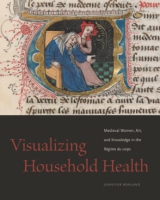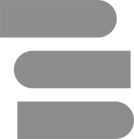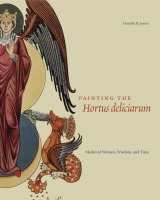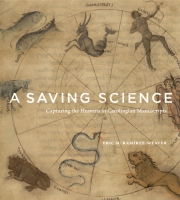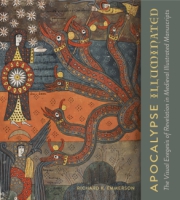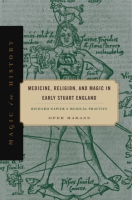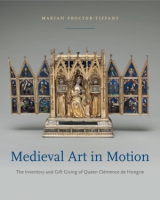
Visualizing Household Health
Medieval Women, Art, and Knowledge in the Régime du corps
Jennifer Borland
Visualizing Household Health
Medieval Women, Art, and Knowledge in the Régime du corps
Jennifer Borland
Winner of the 2024 Best First Book of Feminist Scholarship on the Middle Ages Award from the Society for Medieval Feminist ScholarshipWinner of the 2025 Karen Gould Book Prize in Art History from the Medieval Academy of America
“Jennifer Borland has done a great service in teaching medievalists from several different fields how to ‘read’ these sequences of historiated initials and how to interpret them as both constructions and constructors of later medieval ideas about bodies, health, and social status.”
- Media
- Description
- Reviews
- Bio
- Table of Contents
- Sample Chapters
- Subjects

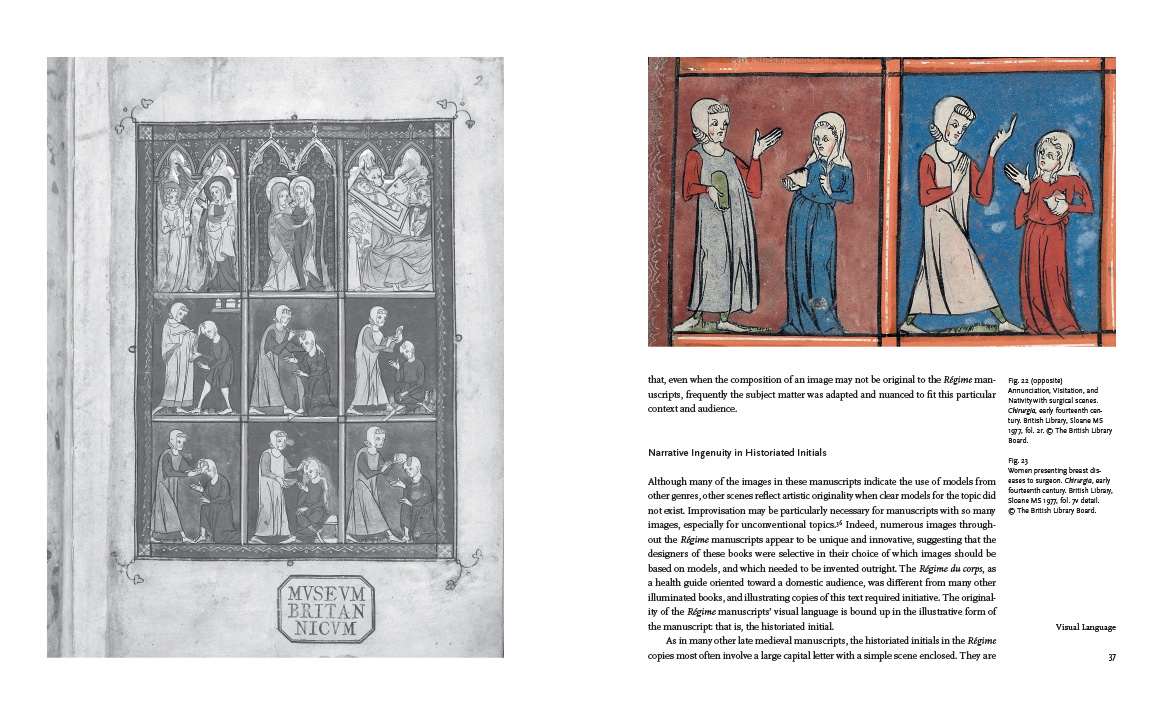
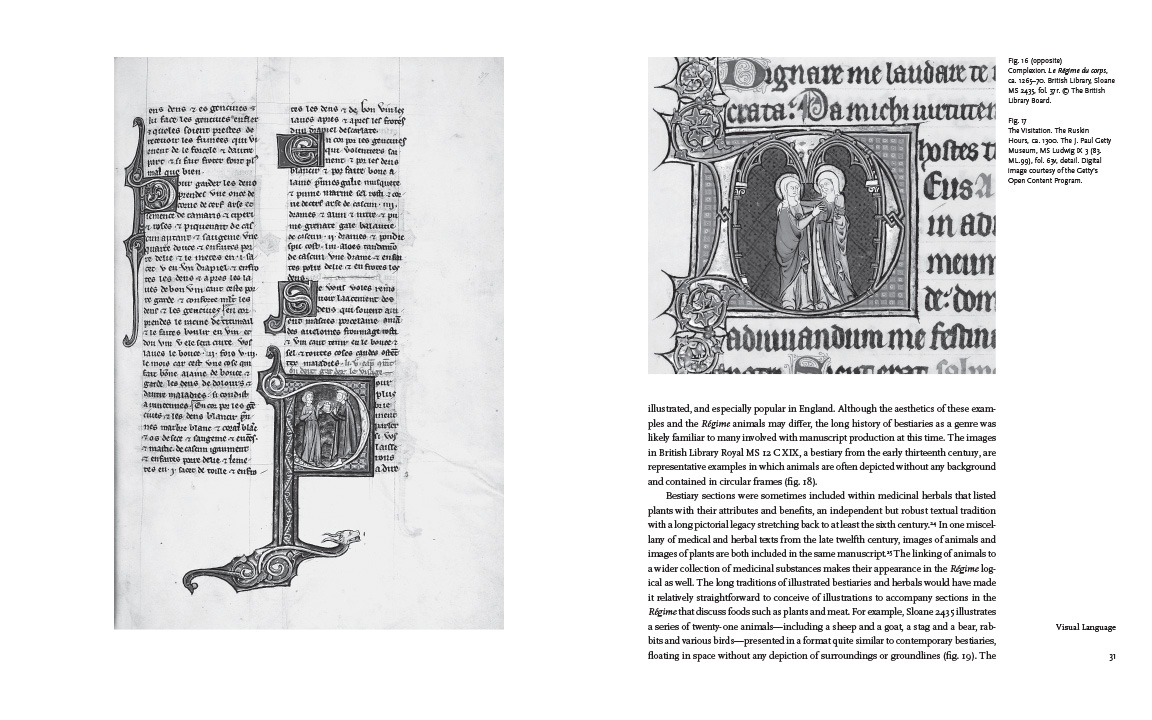
Visualizing Household Health explores the nature of the households portrayed in the Régime and how their members interacted with professionalized medicine. Borland focuses on several illustrated versions of the manuscript that contain historiated initials depicting simple scenes related to health care, such as patients’ consultations with physicians, procedures like bloodletting, and foods and beverages recommended for good health. Borland argues that these images provide important details about the nature of women’s agency in the home—and offer highly compelling evidence that women enacted multiple types of health care. Additionally, she contends, the Régime opens a window onto the history of medieval women as owners, patrons, and readers of books.
Interdisciplinary in scope, this book broadens notions of the medieval medical community and the role of women in medieval health care. It will be welcomed by scholars and students of women’s history, art history, book history, and the history of medicine.
“Jennifer Borland has done a great service in teaching medievalists from several different fields how to ‘read’ these sequences of historiated initials and how to interpret them as both constructions and constructors of later medieval ideas about bodies, health, and social status.”
“Visualizing Household Health: Medieval Women, Art, and Knowledge in the ‘Régime du corps’ is a valuable contribution to the study of medieval medicine, deluxe manuscripts, and elite domesticity. Its in-depth interpretations of some of the Régime’s historiated initials stand out as especially noteworthy.”
“Visualizing Household Health includes the academic apparatus to support further study of the Régime, while also serving as a welcome and timely interpretative exploration of the illumination, reception, and context of these fascinating manuscripts.”
“A most welcome addition to the study of medieval medical imagery.”
“Borland’s beautiful book, ornamented with eighty-five illustrations and appended with three excellent tables describing the Regime manuscripts and their illustrations, will be a valuable resource for historians of medieval art and scholars of medieval medicine intent on understanding how women labored in service of their own health and that of their households.”
“Just as the Régime targets a wide-ranging readership, so too does Borland’s book have much to offer to different disciplines....”
“Very thoughtful in its approach and its discussion of so many interrelated contexts, Borland’s book is truly interdisciplinary and makes a major contribution to art history, gender studies, manuscript studies, history of medicine, and so many other fields.”
“[Borland’s] insistence on centering women’s practices as essential to the care and maintenance of the household, in a text written by a man from a medical practice that excluded women, is a convincing and important undertaking. Her book, which is relevant to readers across many fields, reveals the need for continued interventions from feminist scholars of medieval history.”
“Borland masterfully weaves together the methodologies of a variety of disciplines: the history of women as patrons and consumers, the history of medicine, anthropology, geography, and of course material and visual studies and art history, all under the larger umbrellas of social history and medieval studies. . . . By immersing the illuminated Régime manuscripts in this multivalent exploration, the full nature of their rich content is finally revealed.”
“Visualizing Household Health interrogates the function and value of illumination paired with a secular text with both practical and theoretical knowledge. . . . Borland demonstrates the newest area of modern scholarly attention to the wayfinding devices that integrated the textual and visual communication of medieval knowledge.”
Jennifer Borland is Professor of Art History and Director of the Humanities Initiative at Oklahoma State University. She is a founding member of the Material Collective and managing editor of the journal Different Visions.
List of Illustrations
Acknowledgements
Introduction
1. The Visual Language of the Régime du corps
2. The Illustrated Manuscripts and Their Audiences
3. The Medical Context for the Régime du corps
4. Household Management, Status, and the Care of the Body
Conclusion
Appendix 1: Summary of Illustrated Copies
Appendix 2: Scenes Depicted in Each Illustrated Copy
Appendix 3: Known Manuscript Copies of the Régime du corps
Notes
Bibliography Index
Download a PDF sample chapter here: Introduction
Mailing List
Subscribe to our mailing list and be notified about new titles, journals and catalogs.
